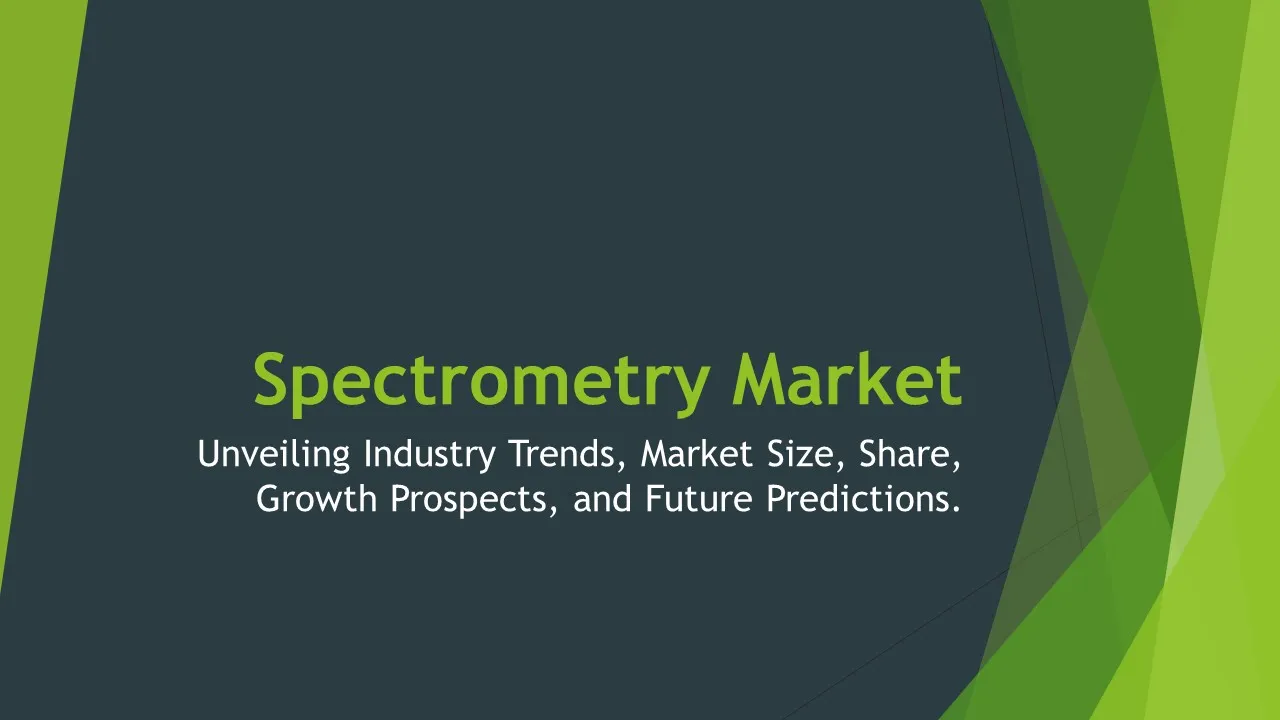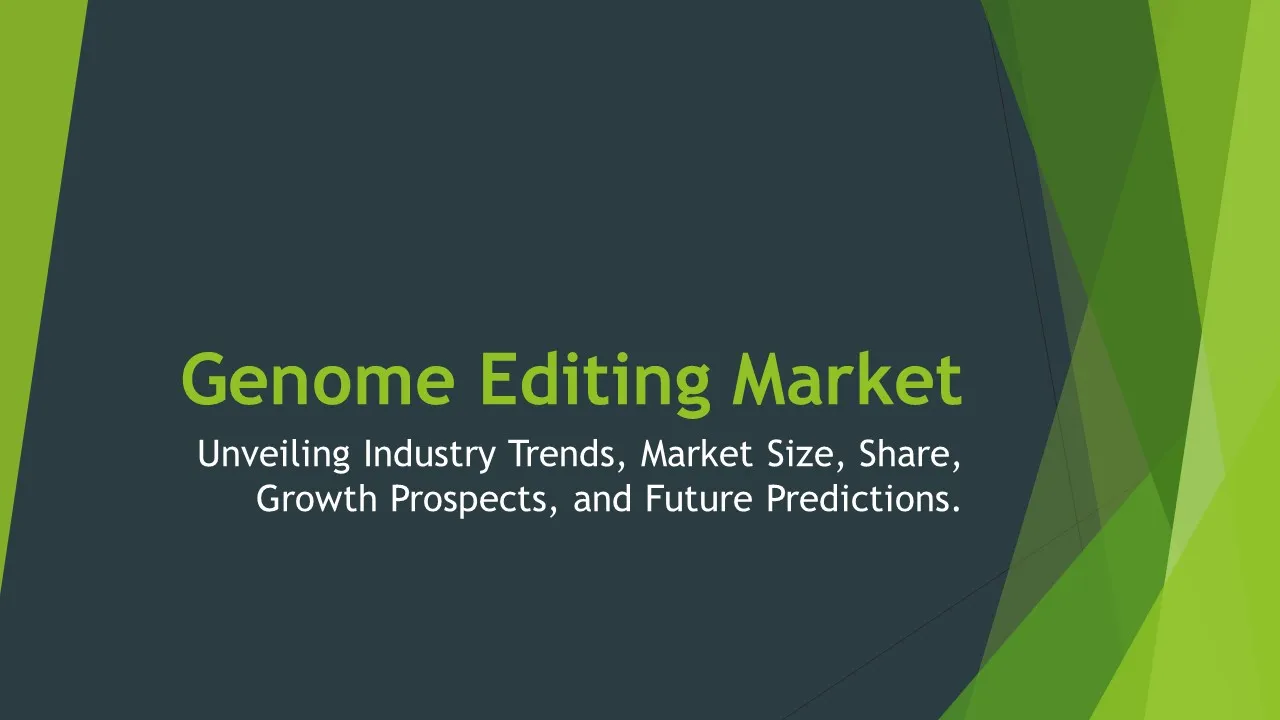In-line UV-vis Spectroscopy
UV-Vis Spectroscopy Market Segments - by Product Type (Benchtop Spectrophotometers, Portable Spectrophotometers, Microplate Readers, Fiber Optic Spectrometers, Array-based Spectrophotometers), Application (Pharmaceuticals, Biotechnology, Environmental Testing, Food & Beverage, Academic Research), End-user (Hospitals & Clinics, Pharmaceutical & Biotechnology Companies, Academic & Research Institutes, Environmental Testing Laboratories, Food & Beverage Industry), Technology (Single-beam UV-Vis Spectroscopy, Double-beam UV-Vis Spectroscopy, Array-based UV-Vis Spectroscopy, Handheld UV-Vis Spectroscopy, Fiber Optic UV-Vis Spectroscopy), and Region (North America, Europe, Asia Pacific, Latin America, Middle East & Africa) - Global Industry Analysis, Growth, Share, Size, Trends, and Forecast 2025-2035
- Report Preview
- Table Of Content
- Segments
- Methodology
In-line UV-Vis Spectroscopy Market Outlook
The global UV-Vis spectroscopy market is projected to reach USD 2.25 billion by 2035, growing at a CAGR of 5.8% from 2025 to 2035. This growth is primarily driven by the increasing demand for analytical tools in various sectors such as pharmaceuticals, environmental testing, and food safety, where UV-Vis spectroscopy plays a pivotal role in quality control and research. Additionally, advancements in spectroscopy technologies, including the development of portable and fiber-optic spectrometers, are further propelling market expansion. The rising trend toward automation and digitization in laboratory practices is also contributing to the growth of the UV-Vis spectroscopy market. Moreover, the emphasis on environmental regulations is prompting industries to adopt sophisticated analytical instruments to ensure compliance, thus boosting the market's potential.
Growth Factor of the Market
One of the significant growth factors driving the UV-Vis spectroscopy market is the escalating demand for precise and reliable analytical solutions across various industries, particularly pharmaceuticals and biotechnology. The ability of UV-Vis spectroscopy to provide rapid and non-destructive analysis makes it suitable for quality assurance processes, ensuring that product safety and efficacy are maintained. Additionally, the increasing focus on research and development activities in academic institutions is creating a strong need for advanced spectroscopic techniques to support experimental studies. The environmental testing sector is also experiencing growth, fueled by the rising necessity for water and air quality monitoring, leading to higher adoption of UV-Vis spectroscopy for evaluating contaminants and pollutants. Furthermore, the expansion of the food and beverage industry, with growing concerns about food safety and quality, is significantly contributing to the market's growth as companies seek reliable methods for testing and analysis of food products.
Key Highlights of the Market
- The global UV-Vis spectroscopy market is expected to grow at a CAGR of 5.8% from 2025 to 2035.
- Advancements in portable and fiber optic spectrometers are enhancing market potential.
- Increased focus on environmental regulations is driving demand for analytical instruments.
- Pharmaceuticals, biotechnology, and environmental testing are key application areas.
- Rising automation and digitization in laboratories are influencing market dynamics.
By Product Type
Benchtop Spectrophotometers:
Benchtop spectrophotometers represent a cornerstone segment in the UV-Vis spectroscopy market, characterized by their high precision and extensive capabilities for laboratory analysis. These instruments are preferred in various sectors due to their ability to provide reliable and reproducible results across a wide range of applications, including quantitative and qualitative analysis. Their user-friendly interfaces and automation features contribute to enhanced productivity while minimizing human error during sample analysis. Furthermore, benchtop models are often designed to accommodate a diverse range of accessories, allowing for specialized applications, such as the measurement of solid samples or turbid solutions, making them indispensable in research laboratories.
Portable Spectrophotometers:
Portable spectrophotometers are gaining traction in the UV-Vis spectroscopy market due to their flexibility and convenience, particularly in field applications. These compact devices allow researchers and professionals to conduct spectroscopic analyses outside traditional laboratory settings, such as in environmental monitoring and food safety inspections. The advancement in optical technologies has significantly improved the performance of portable spectrophotometers, enabling them to deliver accurate results comparable to their benchtop counterparts. The growing need for on-site testing and real-time data acquisition has further fueled the demand for portable spectrophotometers, making them a vital tool in various industries.
Microplate Readers:
Microplate readers are another pivotal product type in the UV-Vis spectroscopy market, widely utilized in high-throughput screening processes in pharmaceuticals and biotechnology. These devices enable simultaneous analysis of multiple samples, significantly increasing efficiency and throughput in laboratory settings. By employing UV-Vis spectroscopy techniques, microplate readers facilitate rapid detection of biological activities, enzyme assays, and other biochemical reactions, thus accelerating research and development timelines. The integration of advanced data analysis software with microplate readers also enhances the accuracy and reliability of results, which is critical for drug development and clinical trials.
Fiber Optic Spectrometers:
Fiber optic spectrometers are revolutionizing the UV-Vis spectroscopy market by providing enhanced measurement capabilities in difficult-to-access environments. These devices utilize fiber optic technology to deliver light to and from the sample, allowing for remote analysis in hazardous or challenging settings, such as chemical plants or outdoor environments. The flexibility of fiber optic spectrometers enables multi-point sampling, making them ideal for applications in environmental monitoring and industrial process control. Their compact design and ability to withstand harsh conditions further increase their appeal, as they are easily deployable in diverse scenarios while maintaining high levels of accuracy and sensitivity.
Array-based Spectrophotometers:
Array-based spectrophotometers represent a sophisticated segment of the UV-Vis spectroscopy market, featuring the capability to measure multiple wavelengths simultaneously. This technology allows for rapid data collection and analysis, significantly enhancing the speed of sample assessment in various applications, including pharmaceuticals, environmental testing, and food safety. The ability to obtain comprehensive spectral data in a single measurement increases the efficiency of analytical workflows and provides richer information for data interpretation and decision-making. Furthermore, array-based instruments are increasingly integrated with automation and advanced software, facilitating seamless operation and data management, which are essential for modern laboratories.
By Application
Pharmaceuticals:
The pharmaceutical sector is a primary application area for UV-Vis spectroscopy, leveraging its capabilities for various quality control and research purposes. UV-Vis spectroscopy is extensively employed in the analysis of raw materials, intermediates, and finished products to ensure compliance with stringent regulatory requirements. The technique is particularly useful for quantifying active pharmaceutical ingredients and determining the purity of compounds. Given the increasing focus on drug safety and efficacy, the demand for advanced analytical tools like UV-Vis spectroscopy is expected to rise, further strengthening its role in pharmaceutical research and development.
Biotechnology:
In the biotechnology field, UV-Vis spectroscopy serves as an essential analytical technique for studying biological molecules and their interactions. Researchers utilize UV-Vis spectroscopy for the quantification of nucleic acids, proteins, and other biomolecules, as well as for monitoring various biochemical reactions. Its ability to provide rapid and reliable data makes it invaluable in research laboratories focused on genetic engineering, drug discovery, and enzyme kinetics. As the biotechnology sector continues to expand, driven by innovations in genomics and proteomics, the reliance on UV-Vis spectroscopy is likely to grow correspondingly, highlighting its significance in this industry.
Environmental Testing:
Environmental testing is an emerging application of UV-Vis spectroscopy, with growing importance due to increasing environmental regulations and concerns about pollution. The technique is utilized for analyzing water quality, assessing pollutant concentrations, and monitoring environmental changes. UV-Vis spectroscopy enables rapid detection of contaminants, such as heavy metals and organic compounds, thereby aiding environmental agencies and laboratories in compliance testing and remediation efforts. The rising global focus on sustainability and environmental protection is anticipated to drive the demand for UV-Vis spectroscopy in environmental testing applications significantly.
Food & Beverage:
In the food and beverage industry, UV-Vis spectroscopy is making a profound impact on quality control processes, particularly in the assessment of food safety and nutritional content. The technique allows for the detection of additives, contaminants, and chemical composition of food products, ensuring compliance with food safety regulations. Furthermore, UV-Vis spectroscopy is utilized for analyzing color and clarity in beverages, which are critical quality parameters. As consumer awareness regarding food safety and quality continues to rise, the adoption of UV-Vis spectroscopy in the food and beverage sector is expected to grow, accompanying the industry's efforts to enhance product integrity.
Academic Research:
Academic research is a significant application sector for UV-Vis spectroscopy, as educational institutions and research organizations require reliable analytical tools for experimental studies. The versatility of UV-Vis spectroscopy enables its application across various scientific disciplines, including chemistry, biology, environmental science, and materials science. Researchers utilize this technique for both fundamental studies and applied research, contributing to advancements in scientific knowledge and technology. The increasing emphasis on research funding and educational initiatives is likely to bolster the demand for UV-Vis spectroscopy within academic institutions, underscoring its relevance in supporting cutting-edge research.
By User
Hospitals & Clinics:
Hospitals and clinics are key users of UV-Vis spectroscopy, employing this analytical technique for a variety of diagnostic and research applications. In clinical laboratories, UV-Vis spectroscopy is instrumental in analyzing samples for the detection of diseases, monitoring treatment efficacy, and conducting routine quality control of reagents and assays. The ability to provide rapid, reliable results makes UV-Vis spectroscopy an essential tool in clinical diagnostics, helping healthcare professionals make informed decisions regarding patient care. As healthcare continues to evolve, the importance of advanced analytical tools like UV-Vis spectroscopy in hospitals and clinics is expected to expand, particularly in personalized medicine and point-of-care testing.
Pharmaceutical & Biotechnology Companies:
Pharmaceutical and biotechnology companies are among the primary end-users of UV-Vis spectroscopy, relying on this technique for various stages of drug development and quality assurance. These organizations utilize UV-Vis spectroscopy for the analysis of drug formulations, stability testing, and compliance with regulatory standards. The technique's ability to provide accurate and reproducible measurements is critical for ensuring product quality and safety, which is paramount in the highly regulated pharmaceutical industry. As the demand for innovative therapeutics continues to rise, pharmaceutical and biotechnology companies are increasingly adopting UV-Vis spectroscopy to streamline their research and development processes.
Academic & Research Institutes:
Academic and research institutes represent a significant user segment within the UV-Vis spectroscopy market, utilizing this technology for a wide range of experimental and analytical purposes. Researchers in various fields depend on UV-Vis spectroscopy to study molecular structures, conduct quantitative analyses, and explore new scientific phenomena. The growing emphasis on interdisciplinary research and collaboration among academic institutions is further driving the demand for advanced spectroscopic techniques. As educational institutions increasingly invest in research infrastructure, the adoption of UV-Vis spectroscopy is likely to expand, supporting innovative research and fostering scientific advancements.
Environmental Testing Laboratories:
Environmental testing laboratories serve as critical users of UV-Vis spectroscopy, employing this analytical technique to assess water and air quality. These laboratories utilize UV-Vis spectroscopy to detect contaminants, monitor environmental changes, and ensure compliance with environmental regulations. The accuracy and speed of UV-Vis spectroscopy enable efficient testing and reporting, which is essential for environmental protection efforts. With the growing focus on sustainability and environmental responsibility, the demand for UV-Vis spectroscopy in environmental testing laboratories is expected to rise, reinforcing its role as a vital analytical tool in this sector.
Food & Beverage Industry:
The food and beverage industry is another key user of UV-Vis spectroscopy, utilizing this technique for quality control, safety testing, and regulatory compliance. Companies in this sector rely on UV-Vis spectroscopy to analyze the composition of food products, detect contaminants, and assess chemical properties such as color and clarity. The increasing consumer demand for safe and high-quality food products is driving the adoption of UV-Vis spectroscopy as a means to ensure product integrity. As the food and beverage industry continues to evolve, the relevance of UV-Vis spectroscopy will likely grow, highlighting its importance in maintaining food safety standards.
By Technology
Single-beam UV-Vis Spectroscopy:
Single-beam UV-Vis spectroscopy is one of the most widely used technologies in the UV-Vis spectroscopy market, characterized by its simplicity and effectiveness in various applications. This technique utilizes a single path for light to pass through the sample, allowing for the measurement of absorbance at specific wavelengths. It is particularly valuable in routine laboratory analyses, such as determining the concentration of analytes in solutions. The ease of operation and relatively low cost of single-beam spectrometers contribute to their popularity in academic and industrial settings, making them essential tools for laboratories focused on chemical analysis and quality control.
Double-beam UV-Vis Spectroscopy:
Double-beam UV-Vis spectroscopy offers enhanced measurement capabilities compared to single-beam systems, making it suitable for more advanced applications. This technology utilizes two separate paths for light, one for the sample and the other for a reference, enabling real-time correction for fluctuations in light sources and environmental conditions. The increased accuracy and sensitivity of double-beam spectrometers make them ideal for research applications where precise quantification is crucial. As laboratories demand greater reliability in their analytical results, the adoption of double-beam UV-Vis spectroscopy is expected to grow, reinforcing its status as a preferred choice for high-quality measurements.
Array-based UV-Vis Spectroscopy:
Array-based UV-Vis spectroscopy represents a significant advancement in spectroscopic technology, allowing for simultaneous measurement of multiple wavelengths. This capability accelerates data acquisition and analysis, making it particularly beneficial for applications requiring rapid screening, such as drug discovery and environmental monitoring. The ability to gather comprehensive spectral information in one measurement enhances the efficiency of analytical workflows and enables researchers to obtain richer datasets for interpretation. The growing trend toward high-throughput analysis in laboratories is likely to drive the demand for array-based UV-Vis spectroscopy technology.
Handheld UV-Vis Spectroscopy:
Handheld UV-Vis spectroscopy has emerged as a valuable tool for on-site analyses, providing convenience and flexibility for users in various fields. These portable devices allow for quick and easy measurements in the field, making them particularly advantageous for environmental monitoring, food safety inspections, and quality control processes. The compact design and user-friendly interfaces of handheld UV-Vis spectrometers enhance accessibility for non-specialist users, broadening their application across different industries. As the need for rapid, on-the-spot testing continues to grow, the adoption of handheld UV-Vis spectrometers is expected to increase, emphasizing their importance in real-time analysis.
Fiber Optic UV-Vis Spectroscopy:
Fiber optic UV-Vis spectroscopy utilizes optical fibers to transmit light to and from samples, enabling measurements in challenging or hazardous environments. This technology allows for remote sampling, making it ideal for applications in industrial settings, environmental monitoring, and chemical analysis where traditional spectroscopic techniques may be impractical. The flexibility and durability of fiber optic systems enhance their usability across diverse scenarios, providing accurate and reliable results. As industries increasingly seek solutions capable of operating under varying conditions, the demand for fiber optic UV-Vis spectroscopy is anticipated to rise, reinforcing its role as a key player in the market.
By Region
The regional analysis of the UV-Vis spectroscopy market reveals significant variations in market dynamics and growth potential across different geographies. North America currently holds the largest market share, accounting for approximately 38% of the global market, driven by robust investments in research and development, particularly in the pharmaceutical and biotechnology sectors. The presence of well-established laboratories and academic institutions further bolsters the demand for advanced analytical tools, including UV-Vis spectrometers. However, the Asia Pacific region is expected to witness the highest growth rate during the forecast period, with a CAGR of 6.5%, primarily fueled by increasing industrialization, expanding healthcare infrastructure, and growing awareness of environmental testing requirements.
Europe stands as another significant market for UV-Vis spectroscopy, characterized by a strong emphasis on quality control and compliance regulations across industries such as pharmaceuticals, food and beverage, and environmental monitoring. The region benefits from a well-connected academic research network that promotes innovation and the adoption of advanced analytical techniques. Meanwhile, Latin America and the Middle East & Africa are gradually emerging as important markets, driven by growing investments in scientific research and education, as well as increasing regulatory scrutiny in environmental monitoring. Overall, the UV-Vis spectroscopy market is poised for significant growth across various regions, reflecting a global trend toward enhanced analytical capabilities.
Opportunities
The UV-Vis spectroscopy market presents numerous opportunities for growth and innovation, particularly through advancements in technology and application expansion. One of the most significant opportunities lies in the integration of UV-Vis spectroscopy with digital technologies and automation. The development of smart spectroscopic systems that can provide real-time data analysis and remote monitoring capabilities is expected to enhance laboratory processes and increase efficiency. Furthermore, the rise of artificial intelligence and machine learning in data interpretation can facilitate more accurate and faster analyses, opening new avenues for research and commercial applications. As industries increasingly embrace digital transformation, the demand for advanced UV-Vis solutions is likely to surge, presenting substantial growth prospects for manufacturers and service providers.
Additionally, the growing focus on sustainability and environmental protection offers a unique opportunity for the UV-Vis spectroscopy market. With increasing regulatory pressures to monitor environmental pollutants and ensure compliance with safety standards, the demand for UV-Vis spectroscopy in environmental testing is expected to rise significantly. Companies that specialize in providing environmental solutions and analytical services can capitalize on this trend by integrating UV-Vis technology into their offerings. Moreover, the expansion of the food and beverage industry, coupled with rising consumer expectations for quality and safety, presents opportunities for UV-Vis spectroscopy in food testing and quality assurance applications. By addressing these emerging needs, stakeholders in the UV-Vis spectroscopy market can unlock new revenue streams and drive sustained growth.
Threats
Despite the promising growth trajectory of the UV-Vis spectroscopy market, certain threats loom that could impact its development. One of the most pressing challenges is the rapid advancement of alternative analytical techniques that may offer comparable or superior performance over traditional UV-Vis spectroscopy. Techniques such as mass spectrometry, chromatography, and near-infrared spectroscopy are gaining traction in various application areas, potentially leading to a shift in preference among researchers and industries. The competitive landscape is further complicated by the presence of established players and new entrants, which may result in price wars and reduced profit margins for UV-Vis spectroscopy manufacturers. Additionally, the economic fluctuations and uncertainties arising from global events, such as pandemics, can disrupt supply chains and hinder market growth.
Another potential threat to the UV-Vis spectroscopy market is the increasing cost of high-quality components and raw materials required for manufacturing spectroscopic instruments. As the demand for advanced features and functionalities rises, manufacturers may face challenges in sourcing the necessary materials while maintaining competitive pricing. Additionally, the requirement for skilled personnel to operate and interpret spectroscopic data can be a limiting factor, particularly in regions with a shortage of trained professionals. The combination of high operational costs and the necessity for continuous investment in research and development to keep pace with technological advancements could pose significant obstacles for companies in the UV-Vis spectroscopy market.
Competitor Outlook
- Agilent Technologies, Inc.
- Thermo Fisher Scientific Inc.
- PerkinElmer, Inc.
- Hitachi High-Tech Corporation
- JASCO Corporation
- Shimadzu Corporation
- Bruker Corporation
- Hach Company
- BioTek Instruments, Inc.
- Analytik Jena AG
- Koehler Instrument Company, Inc.
- ABB Limited
- Milton Roy Company
- Specac Limited
- Cary Instruments
The competitive landscape of the UV-Vis spectroscopy market is characterized by the presence of prominent players that offer a diverse range of spectroscopic solutions tailored to meet the needs of various industries. Key companies such as Agilent Technologies, Thermo Fisher Scientific, and PerkinElmer are at the forefront of innovation, constantly enhancing their product offerings to incorporate advanced technologies, such as automation and data analysis software. These companies leverage their extensive experience and strong brand recognition to capture significant market share while investing heavily in research and development to stay ahead of competitors. The growing trend toward sustainability and digital transformation also compels these corporations to adapt their strategies, ensuring they remain relevant in an evolving market landscape.
Agilent Technologies, Inc. is recognized for its cutting-edge spectroscopic instruments and has established itself as a leader in providing analytical solutions for various applications, including pharmaceuticals and environmental testing. The company’s commitment to innovation is evident in its continuous investment in R&D, ensuring that it remains competitive in the UV-Vis spectroscopy market. Similarly, Thermo Fisher Scientific Inc. offers a comprehensive portfolio of UV-Vis spectrometers designed for various applications, emphasizing the incorporation of user-friendly interfaces and advanced data processing capabilities. The company’s strong global presence and extensive distribution network enable it to reach a broad customer base, further solidifying its position in the market.
PerkinElmer, Inc. has also made significant strides in the UV-Vis spectroscopy market, focusing on expanding its product range to meet the increasing demand for quality control solutions in various industries. The company’s instruments are widely used in laboratories worldwide, and its commitment to customer support and service enhances its competitive edge. Additionally, the market sees the emergence of smaller companies offering specialized UV-Vis solutions, which can pose a challenge to larger players by targeting niche segments and providing tailored services. The overall competitive landscape of the UV-Vis spectroscopy market remains dynamic, with companies continuously striving to innovate and adapt to the changing needs of customers and regulatory environments.
1 Appendix
- 1.1 List of Tables
- 1.2 List of Figures
2 Introduction
- 2.1 Market Definition
- 2.2 Scope of the Report
- 2.3 Study Assumptions
- 2.4 Base Currency & Forecast Periods
3 Market Dynamics
- 3.1 Market Growth Factors
- 3.2 Economic & Global Events
- 3.3 Innovation Trends
- 3.4 Supply Chain Analysis
4 Consumer Behavior
- 4.1 Market Trends
- 4.2 Pricing Analysis
- 4.3 Buyer Insights
5 Key Player Profiles
- 5.1 ABB Limited
- 5.1.1 Business Overview
- 5.1.2 Products & Services
- 5.1.3 Financials
- 5.1.4 Recent Developments
- 5.1.5 SWOT Analysis
- 5.2 Hach Company
- 5.2.1 Business Overview
- 5.2.2 Products & Services
- 5.2.3 Financials
- 5.2.4 Recent Developments
- 5.2.5 SWOT Analysis
- 5.3 Specac Limited
- 5.3.1 Business Overview
- 5.3.2 Products & Services
- 5.3.3 Financials
- 5.3.4 Recent Developments
- 5.3.5 SWOT Analysis
- 5.4 Analytik Jena AG
- 5.4.1 Business Overview
- 5.4.2 Products & Services
- 5.4.3 Financials
- 5.4.4 Recent Developments
- 5.4.5 SWOT Analysis
- 5.5 Cary Instruments
- 5.5.1 Business Overview
- 5.5.2 Products & Services
- 5.5.3 Financials
- 5.5.4 Recent Developments
- 5.5.5 SWOT Analysis
- 5.6 JASCO Corporation
- 5.6.1 Business Overview
- 5.6.2 Products & Services
- 5.6.3 Financials
- 5.6.4 Recent Developments
- 5.6.5 SWOT Analysis
- 5.7 PerkinElmer, Inc.
- 5.7.1 Business Overview
- 5.7.2 Products & Services
- 5.7.3 Financials
- 5.7.4 Recent Developments
- 5.7.5 SWOT Analysis
- 5.8 Bruker Corporation
- 5.8.1 Business Overview
- 5.8.2 Products & Services
- 5.8.3 Financials
- 5.8.4 Recent Developments
- 5.8.5 SWOT Analysis
- 5.9 Milton Roy Company
- 5.9.1 Business Overview
- 5.9.2 Products & Services
- 5.9.3 Financials
- 5.9.4 Recent Developments
- 5.9.5 SWOT Analysis
- 5.10 Shimadzu Corporation
- 5.10.1 Business Overview
- 5.10.2 Products & Services
- 5.10.3 Financials
- 5.10.4 Recent Developments
- 5.10.5 SWOT Analysis
- 5.11 BioTek Instruments, Inc.
- 5.11.1 Business Overview
- 5.11.2 Products & Services
- 5.11.3 Financials
- 5.11.4 Recent Developments
- 5.11.5 SWOT Analysis
- 5.12 Agilent Technologies, Inc.
- 5.12.1 Business Overview
- 5.12.2 Products & Services
- 5.12.3 Financials
- 5.12.4 Recent Developments
- 5.12.5 SWOT Analysis
- 5.13 Hitachi High-Tech Corporation
- 5.13.1 Business Overview
- 5.13.2 Products & Services
- 5.13.3 Financials
- 5.13.4 Recent Developments
- 5.13.5 SWOT Analysis
- 5.14 Thermo Fisher Scientific Inc.
- 5.14.1 Business Overview
- 5.14.2 Products & Services
- 5.14.3 Financials
- 5.14.4 Recent Developments
- 5.14.5 SWOT Analysis
- 5.15 Koehler Instrument Company, Inc.
- 5.15.1 Business Overview
- 5.15.2 Products & Services
- 5.15.3 Financials
- 5.15.4 Recent Developments
- 5.15.5 SWOT Analysis
- 5.1 ABB Limited
6 Market Segmentation
- 6.1 In-line UV-vis Spectroscopy Market, By user
- 6.1.1 Hospitals & Clinics
- 6.1.2 Pharmaceutical & Biotechnology Companies
- 6.1.3 Academic & Research Institutes
- 6.1.4 Environmental Testing Laboratories
- 6.1.5 Food & Beverage Industry
- 6.2 In-line UV-vis Spectroscopy Market, By Technology
- 6.2.1 Single-beam UV-Vis Spectroscopy
- 6.2.2 Double-beam UV-Vis Spectroscopy
- 6.2.3 Array-based UV-Vis Spectroscopy
- 6.2.4 Handheld UV-Vis Spectroscopy
- 6.2.5 Fiber Optic UV-Vis Spectroscopy
- 6.3 In-line UV-vis Spectroscopy Market, By Application
- 6.3.1 Pharmaceuticals
- 6.3.2 Biotechnology
- 6.3.3 Environmental Testing
- 6.3.4 Food & Beverage
- 6.3.5 Academic Research
- 6.4 In-line UV-vis Spectroscopy Market, By Product Type
- 6.4.1 Benchtop Spectrophotometers
- 6.4.2 Portable Spectrophotometers
- 6.4.3 Microplate Readers
- 6.4.4 Fiber Optic Spectrometers
- 6.4.5 Array-based Spectrophotometers
- 6.1 In-line UV-vis Spectroscopy Market, By user
7 Competitive Analysis
- 7.1 Key Player Comparison
- 7.2 Market Share Analysis
- 7.3 Investment Trends
- 7.4 SWOT Analysis
8 Research Methodology
- 8.1 Analysis Design
- 8.2 Research Phases
- 8.3 Study Timeline
9 Future Market Outlook
- 9.1 Growth Forecast
- 9.2 Market Evolution
10 Geographical Overview
- 10.1 Europe - Market Analysis
- 10.1.1 By Country
- 10.1.1.1 UK
- 10.1.1.2 France
- 10.1.1.3 Germany
- 10.1.1.4 Spain
- 10.1.1.5 Italy
- 10.1.1 By Country
- 10.2 Asia Pacific - Market Analysis
- 10.2.1 By Country
- 10.2.1.1 India
- 10.2.1.2 China
- 10.2.1.3 Japan
- 10.2.1.4 South Korea
- 10.2.1 By Country
- 10.3 Latin America - Market Analysis
- 10.3.1 By Country
- 10.3.1.1 Brazil
- 10.3.1.2 Argentina
- 10.3.1.3 Mexico
- 10.3.1 By Country
- 10.4 North America - Market Analysis
- 10.4.1 By Country
- 10.4.1.1 USA
- 10.4.1.2 Canada
- 10.4.1 By Country
- 10.5 Middle East & Africa - Market Analysis
- 10.5.1 By Country
- 10.5.1.1 Middle East
- 10.5.1.2 Africa
- 10.5.1 By Country
- 10.6 In-line UV-vis Spectroscopy Market by Region
- 10.1 Europe - Market Analysis
11 Global Economic Factors
- 11.1 Inflation Impact
- 11.2 Trade Policies
12 Technology & Innovation
- 12.1 Emerging Technologies
- 12.2 AI & Digital Trends
- 12.3 Patent Research
13 Investment & Market Growth
- 13.1 Funding Trends
- 13.2 Future Market Projections
14 Market Overview & Key Insights
- 14.1 Executive Summary
- 14.2 Key Trends
- 14.3 Market Challenges
- 14.4 Regulatory Landscape
Segments Analyzed in the Report
The global In-line UV-vis Spectroscopy market is categorized based on
By Product Type
- Benchtop Spectrophotometers
- Portable Spectrophotometers
- Microplate Readers
- Fiber Optic Spectrometers
- Array-based Spectrophotometers
By Application
- Pharmaceuticals
- Biotechnology
- Environmental Testing
- Food & Beverage
- Academic Research
By user
- Hospitals & Clinics
- Pharmaceutical & Biotechnology Companies
- Academic & Research Institutes
- Environmental Testing Laboratories
- Food & Beverage Industry
By Technology
- Single-beam UV-Vis Spectroscopy
- Double-beam UV-Vis Spectroscopy
- Array-based UV-Vis Spectroscopy
- Handheld UV-Vis Spectroscopy
- Fiber Optic UV-Vis Spectroscopy
By Region
- North America
- Europe
- Asia Pacific
- Latin America
- Middle East & Africa
Key Players
- Agilent Technologies, Inc.
- Thermo Fisher Scientific Inc.
- PerkinElmer, Inc.
- Hitachi High-Tech Corporation
- JASCO Corporation
- Shimadzu Corporation
- Bruker Corporation
- Hach Company
- BioTek Instruments, Inc.
- Analytik Jena AG
- Koehler Instrument Company, Inc.
- ABB Limited
- Milton Roy Company
- Specac Limited
- Cary Instruments
- Publish Date : Jan 21 ,2025
- Report ID : TE-65084
- No. Of Pages : 100
- Format : |
- Ratings : 4.5 (110 Reviews)









